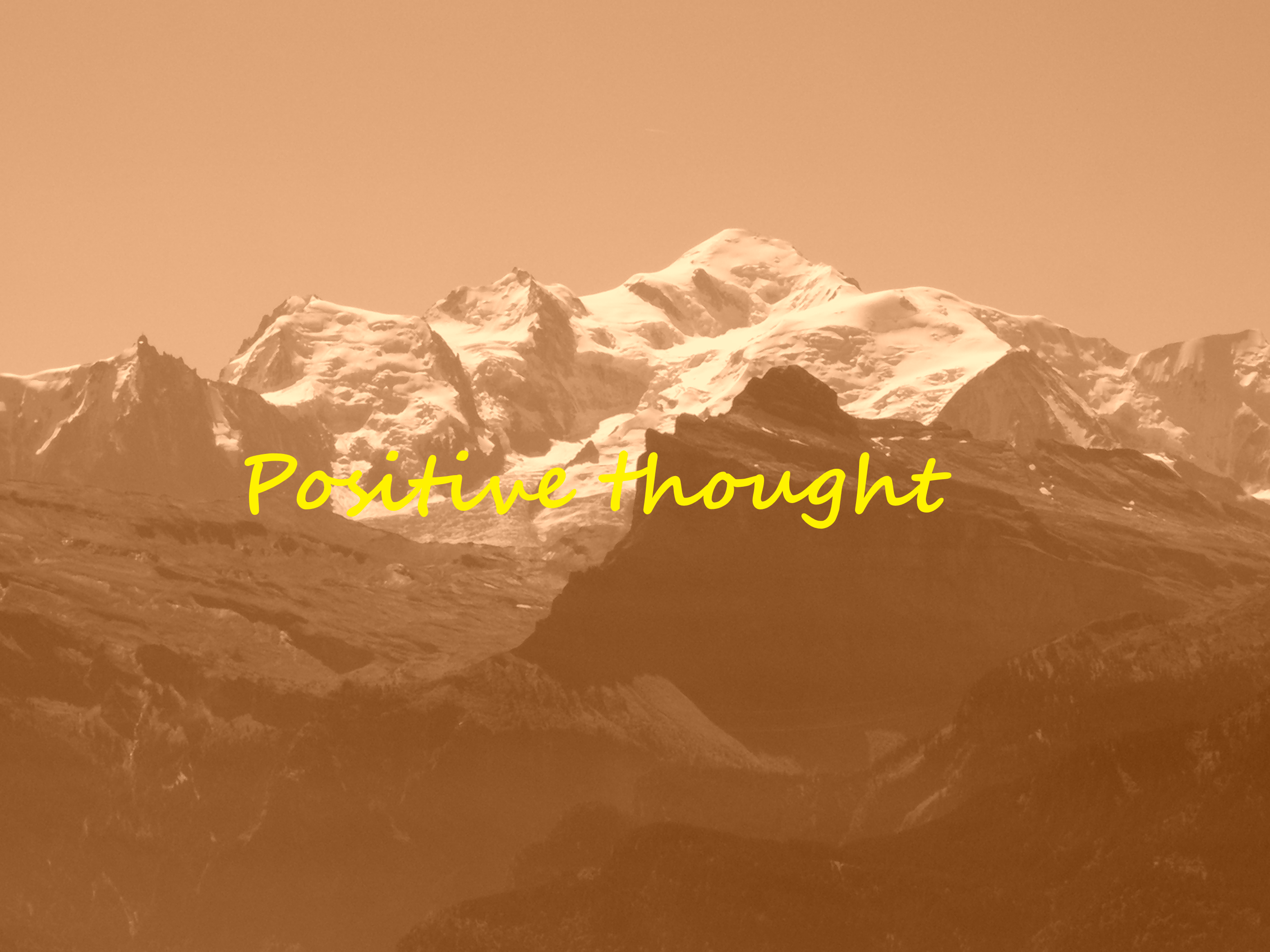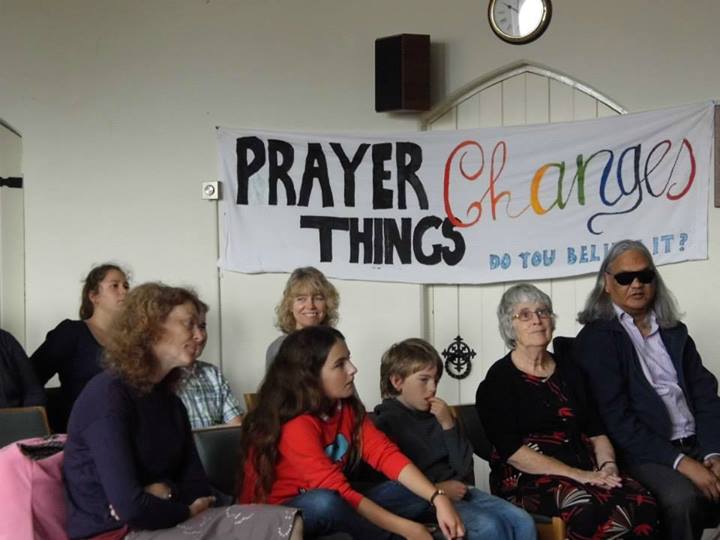
Time Person of the Year 2011 The Protester
TIME has named the 2011 Person of the Year and it’s no surprise: The Protester. Highly inclusive, it covers Occupy Wall Street, the 99 Percent, Tahrir Square and the rest of the Arab Spring and actions in Europe and across the globe.
History often emerges only in retrospect. Events become significant only when looked back on.
No one could have known that when a Tunisian fruit vendor set himself on fire in a public square in a town barely on a map, he would spark protests that would bring down dictators in Tunisia, Egypt and Libya and rattle regimes in Syria, Yemen and Bahrain.
Sometimes a nearly unnoticed fact in other countries can be the trigger which gets the ball rolling all over the world. (Think about Sarajevo and the First World War)
Everywhere this year, people have complained about the failure of traditional leadership and the fecklessness of institutions.

Protester's fist - Photograph by Peter Hapak for Time
Some years ago news got to get throug by wires and in the newspapers. Today the major news events are still chronicled strictly by professionals and printed on paper or transmitted through the air by the few for the masses. But we got a new medium which brings other writers getting incidents made known quicker. Occurences are brought onto the screen of many all across the world. An incident or event is trumpetted by many occasional writers are people interested in certain facts who bring their ideas to the forefront on the internet.
Fifty years ago it were the dedicated people who wanted to march for their ideals and marched for civil rights, peace and against the Vietnam War. Any unrighteousness in the world was protested by those who had their heart fixed on an ethical point of view or on a political view. Either it was to protest for more human rights or to protect nature; in the ’70s, they rose up in Iran and Portugal; in the ’80s, they spoke out against nuclear weapons in the U.S. and Europe, against Israeli occupation of the West Bank and Gaza, against communist tyranny in Tiananmen Square and Eastern Europe. Protest was the natural continuation of politics by other means.
When there was a demonstration all felt united and went for the same thought. Today that is not any more the case. Even actions with the same name can be totally different of in- and output.
When we look at the Occupy protesters we clearly see that they don’t all have the same agenda. Some seem to focus on Citizens United, or on the in-equality of peoples finance, focussing on the gap between the rich and the poor, others look more at the banks and again in other countries they may look more at the political system. It looks like we can melt it down to the essence of a general human rights issue.
The last decennia we had many green protestors and anti-nuclear-power-plant groups, while the political-economic points were left more aside. But today those economical factors and political structures of how governments are handling people do lie in the forefront. After the 1990ies the rare large demonstrations in the rich world seemed ineffectual and irrelevant. When there were some protests the activists were looked at as some loonies. And all those pacifists and ‘greens’ were considered not of this world. Only the Apartheid Actions could get good results and got a better system in South Africa from 1994 onwards.
“Massive and effective street protest” was a global oxymoron until — suddenly, shockingly — starting exactly a year ago, it became the defining trope of our times. And the protester once again became a maker of history.
The old trick to put oneself on fire was taken on by the son of Mannoubia Bouazizi. 26-year-old street vendor named Mohamed Bouazizi, who lived in the charmless Tunisian town of Sidi Bouzid, 125 miles south of Tunis renched himself in paint thinner and lit a match, to protest against the bullying of the police. “In Tunisia,” his 16-year-old daughter Basma says, “dignity is more important than bread.” And lots of people who did find they could not live in dignity any more went on to the streets.Started off in North Africa it continued to spread like a virus. In Spain the Los Indignados got on their feet to march to the ‘heart of Europe’ and let their voice to be heard in Brussels.
At the new millennium people wanted to go forward in anew age. But more and more they felt pressure from outside their home. They also got the feeling more and more that their work was not valued and respected as it should be. They thought that they had liberated themselves but found themselves in the handcuffs of the employers, bounded to a more restricting income. Instead of being able to continue to progress and to become better off or ‘richer’ they felt that they could do less with their money.
Lots of people want to get away of the smokescreen plus want a clear articulation and codification of the practices being used, with at flexible system that protects both Constitutional rights, nation’s security and the environment of this world we have to live in and have to be able to survive. It is as if people at last have seen that we cannot continue in the way our materialist world was moving. People are “sick of business as usual.”and want some clear signals of change and more righteousness.
Everywhere this year, people have complained about the failure of traditional leadership and the fecklessness of institutions.
In a few short months the protest movements could capture Time’s Person of the Year award.
Rick Stengel in Time writes: “Is there a global tipping point for frustration? Everywhere, it seems, people said they’d had enough. They dissented; they demanded; they did not despair, even when the answers came back in a cloud of tear gas or a hail of bullets. They literally embodied the idea that individual action can bring collective, colossal change. And although it was understood differently in different places, the idea of democracy was present in every gathering. The root of the word democracy is demos, “the people,” and the meaning of democracy is “the people rule.” And they did, if not at the ballot box, then in the streets. America is a nation conceived in protest, and protest is in some ways the source code for democracy — and evidence of the lack of it.”
+

Time Person of the Year 2011 The Protester
Read the
- Cover Story: The Protester By Kurt Andersen
- Person of the Year Introduction By Rick Stengel
++
Four runners up:
- Kate Middleton is the Duchess of Cambridge and wife of Prince William, , who married Britain’s Prince William in April
- Ai Weiwei is an influential Chinese contemporary artist and dissident.
- Representative Paul Ryan, a US Congressman; House Budget Committee chairman, whose deficit-reduction plan makes him the “most influential American politician.”
- William McRaven is a US Navy Admiral. (Head of Joint Special Operations Command and commander of the SEAL Osama operation)
Find out how Care2 members voted
°°°
Protesters were prime makers of history for 2011.
Related articles
- Time magazine marks a year of turmoil with ‘The Protester’ (mercurynews.com)
Time magazine has again turned to a concept for its latest person of the year, choosing “The Protester” in recognition of a year in which unhappiness with politics and the economy was given voice in streets around the world, most notably in the Mideast.”Is there a global tipping point for frustration?” asked the magazine’s top editor, Rick Stengel, in a statement Wednesday. He appeared on several morning talk shows to push the same theme.”Everywhere, it seems, people said they’d had enough,” Stengel stated. “They dissented; they demanded; they did not despair, even when the answers came back in a cloud of tear gas or a hail of bullets. They literally embodied the idea that individual action can bring collective, colossal change. And although it was understood differently in different places, the idea of democracy was present in every gathering.” - Time Magazine Names ‘The Protester’ as 2011 Person of the Year (ibtimes.com)
The first to be chosen Person of the Year was aviator Charles Lindbergh in 1927. Controversial figures that have also received the title include Adolf Hitler in 1938, Josef Stalin in 1943 and Iran’s Ayatollah Khomeini in 1979. This year’s selection reflects a more conceptual choice, like The American Fighting-Man in 1950 and The Middle Americans in 1969. - Time magazine marks a year of turmoil with ‘The Protester’ (mercurynews.com)
This year was hardly the first in which crowds of people took to the streets. Indeed, the Quaker adage of speaking truth to power is at least 60 years old in its word formula and centuries, if not millennia old, in its spirit. There were food riots in the ancient world, slave rebellions in Roman times and the occasional revolution, peaceful or not, since the 1700s.Given how nasty, brutish and short human lives have been over the eons, it may be more of a wonder that there have been so few revolutions. And that goes to one of the points that magazine writer Kurt Anderson makes in his argument for the protester selection. - ‘The Protester’ Is Time’s Person Of The Year (news.sky.com)
“This year, do-it-yourself democratic politics became globalised, and real live protest went massively viral. But as they’ve rejuvenated and enlarged the idea of democracy, the protesters, and the rest of us, are discovering that democracy is difficult and sometimes a little scary,” Andersen wrote. - Person of the year (nebraskaenergyobserver.wordpress.com)
Time has never said it was supposed to be someone who worked for good (whatever your definition of that word entails). I find it a little wimpy (for lack of a better word) though when they can’t pick one person, like, you know Stalin, or Hitler, or Roosevelt - ‘The Protester’ Is Time Magazines Person Of The Year (dekerivers.wordpress.com)
Ever since modern republican democracy was invented, astonishing protests and uprisings have spiked and spread once every half-century or so: the revolutions in America and France and Haiti; the revolutions of 1848; the revolutions of the 1910s (Russia, Germany, Ireland, Turkey, Egypt, Mexico); the postwar wave of worldwide revolt (the movements toward decolonization, Cuba, Hungary, American civil rights, countercultural militancy in America and Europe). It happens almost like clockwork, yet each time people are freshly shocked and bedoozled. - Time’s POTY: “The Protester” (hotair.com)
From our own history, we had massive anti-war and anti-draft protests in the 60s … the 1860s, in New York. It had the same effect as anti-war protests in the 1960s, which was that the war continued apace (and the nation elected a Republican as president in the next national election).
+
Instead of picking an actual person who had a real impact on the world this year, though, Time instead chose to highlight one of the media’s most overblown stories and dress it up a little with a nonsense connection to protests in the Arab world that were prompted by completely different issues. - Chinese Village in Revolt (pochp.wordpress.com)
A long-running dispute between farmers and local officials in southern China exploded into open rebellion this week after villagers chased away government leaders, set up roadblocks and began arming themselves with homemade weapons, residents said. ‘The conflict in Wukan, a coastal settlement near the country’s booming industrial heartland in Guangdong Province, escalated on Monday after residents learned that one of the representatives they had selected to negotiate with the local Communist Party had died in police custody. - Time’s person of the year: “The Protester” (cbsnews.com)
Not all protests were regime-toppling, however. Syria’s violent crackdown on pro-democracy protests has been condemned internationally, but President Bashar al-Assad has remained defiant in the face of calls for him to step aside. - Unrest Is Best: Time Magazine’s Person Of The Year Is ‘The Protester’ (mediaite.com)
After being heavily derided for naming mid-aughts sensation Mark Zuckerberg as its 2010 Person of the Year, Time Magazine has bounced back and gotten it right this year. The magazine has named “The Protester” its 2011 Person of the Year, which, the magazine notes, marks a rather miraculous comeback for that form of political action. In 2011, political protests literally changed the world, and even made something of a dent in the American cultural landscape. For a very long time, political protests, no matter how large, seemed like so much wallpaper, ubiquitous and of dubious relevance. - TIME’s Person of the Year: The Protester (geneveith.com)
My particular christian sect called the Evangelical Lutheran Church was started by a protester. So how could I argue that protest is not important?And I note that the protest that blesses me to this day is one that rather rigerously persued all legal and legitimate paths and eschewed anything at all the smelled of end-justifies-means.
+
To the extent that this is also true for protesters wherever, we see God’s hand at work in protest.
+
Cincinnatus comments: “Political and social (and religious, etc.) life shouldn’t be an unceasing defense/attack of the status quo.” - Ex-Admiral: Indefinite Detention Is A Win For Terrorists (huffingtonpost.com)
the idea that the United States is chipping away at one of its fundamental principles of civilian law enforcement is a win for terrorists.”The enemy is just laughing over this, because they will have gotten another victory,” Hutson told The Huffington Post. “There’ll be one more victory. There won’t be any bloodshed or immediate bloodshed, there’s not a big explosion, except in a metaphorical sense, but it is a victory nonetheless for the enemy. And it’s a self-inflicted wound.” - The LAPD, Obama, and the National Defense Authorization Act: WTF? (laist.com)
So how does a tale of civilian police and how they handle arrested protesters connect to national politics and policy?”Shut your fucking mouth! We can lose you in here” becomes even more poignant as the constitutionally challenged National Defense Authorization Act for 2012 sits on President Obama’s desk. As it currently stands, spokespeople for Obama have stated he would not veto it. - TIME Magazine’s Person of the Year for 2011: The Protester (hudsonhorizons.com)
Using Facebook, using Twitter, using cell phones and various other apps on their smartphones was an important means of getting the news out. So it became this parallel news media. - TIME’s Person of the Year Short List: Ai Weiwei, China’s Activist-Artist (time.com)
Thanks for liking Ai Weiwei: The Dissident. Like TIME on Facebook for more trusted news analysis, award-winning multimedia & behind-the-scenes looks with TIME editors.
For 81 days last spring and summer, Ai Weiwei was China’s most famous missing person. - TIME Magazine names The Protester as its Person of the Year for 2011 (100gf.wordpress.com)
By naming The Protester as its Person of the Year for 2011, TIME comes dangerously close to legitimising disruptive forces within our society. But the magazine does not quite go through with such a move. For many, The Protestor is still the kind of person who toppled Muammar Gaddafi or who camps out in Zuccotti Park. The rest – the people who rioted in London and Birmingham, for example – are just hooligans looking for free stuff. Aren’t they? - Who Should Be TIME’s Person of the Year 2011? (leggotunglei808.wordpress.com)
From tsunamis to budget battles to revolutions, 2011 has been a tumultuous, news-packed year. Who influenced the news most, for better or worse? Tradition dictates that TIME’s editors choose the Person of the Year, but we want to know: if you were in charge, who would it be? - Van Jones on America’s Uprising: It’s Going To Be an Epic Battle(alternet.org)
As the grassroots sit-ins and marches that originated as Occupy Wall Street spread to other cities, Van Jones, lead evangelist for the American Dream movement, took the stage Monday at a Washington, DC hotel where organizers of the institutional element of the progressive movement converged at Take Back the American Dream.
- Tea Party Lessons for the Left (thedailybeast.com)
paradoxically, only if this new left protest movement embraces some crucial lessons from the Tea Party movement—and if it outgrows certain impulses from 1968 that continue to loom large in the left’s imagination. - ‘The Protester’ named Time magazine’s person of the year (smh.com.au)
- An Idea Whose Time Has Come (adask.wordpress.com)
Mohammed Bouazizi’s suicidal protest should scare the hell out of politicians around the world. His death illustrates how a single, seemingly insignificant event can trigger consequences that can’t possibly be anticipated or prevented. We live in an age where people are under so much stress–where there is so much anger, fear and frustration is bottled up–that a society or entire region of the world that appears “orderly” can suddenly explode into confrontations and revolution. - Sarah van Gelder: Where the 99% Get Their Power (huffingtonpost.com)
Whatever issue you care to name, from childhood obesity (linked to agribusiness subsidies) to war (linked to the power of the military-industrial complex), from a watered-down health care bill (linked big pharma and health insurance corporations), to a failing economy (which Wall Street and corporations have depleted in favor of global speculation), the power of the one percent is at the root of the problem. And the power of the 99 percent is key to the solution. - The Protester: A Portfolio by Peter Hapak (lightbox.time.com)
Harara is one of more than a hundred protesters around the world photographed by TIME contract photographer Peter Hapak. From Oakland, Calif., to New York City, across Europe and through the Middle East, Hapak and I traveled nearly 25,000 miles photographing protesters and activists from eight countries. - Occupy Wall Street attracts NYC tourists (msnbc.msn.com)
Zuccotti Park has become a hub for more than demonstrators. Visitors, curious to see protest in action, are regular arrivals. Some take photographs of themselves, protesters and their signs in the background. On a typical day they clog the pedestrian traffic in the area, which is often bustling with financial district employees pushing their way through. - Time Magazine Picks Person Of The Year (kymx.radio.com)
-
- Onderbroeken, vreemdelingen en rechtsstaat (marcusampe.wordpress.com)
- Op straat voor waardigheid #3 de Rest van de Familie (marcusampe.wordpress.com)
- Metafoor over een generatie (marcusampe.wordpress.com)
- Occupy Movement Verzwegen in de media (marcusampe.wordpress.com)
- Anti-Crisis anger calling out (marcusampe.wordpress.com)
- Verontwaardigd over Indignados (marcusampe.wordpress.com)
- Justififiable anger or just anarchism (marcusampe.wordpress.com)
- Tunisia unveils Bouazizi cart statue in Sidi Bouzid – BBC News (bbc.co.uk)
Tunisians have unveiled a statue in honour of the man who set himself alight a year ago, unleashing a protest movement that ended President Zine el-Abidine Ben Ali’s 23-year rule.
Tunisia’s new President Moncef Marzouki joined flag-waving crowds in Sidi Bouzid in commemoration.
- Peter Goodspeed: Mohamed Bouazizi, ‘Son of the whole world’ (fullcomment.nationalpost.com)
The Arab Spring, one year later: We begin a six-part look at the convulsions that have shaken the Middle East and North Africa since the day one year ago when Tunisian fruit vendor Mohamed Bouazizi set himself alight in protest.
- A year later, Bouazizi’s legacy still burns (cnn.com)
Mohamed Bouazizi’s self-immolation spurred change in Tunisia
Egyptians were emboldened by the Tunisian revolt
Bouazizi posthumously won the Sakharov Prize
(CNN) — One year ago, Tunisian fruit vendor Mohamed Bouazizi torched himself out of economic despair, and the news of his desperate act spread like a brushfire across the North African country,… - Tunisia: a year on, slow-burn revolt lingers (rt.com)
RT’s Irina Galushko has traveled to Tunisia’s Sidi Bouzid – the site of the first clashes and a catalyst for other protests in the region.
































 Biblestudents – Bijbelstudenten
Biblestudents – Bijbelstudenten 0 + Bloggers for Peace
0 + Bloggers for Peace Free Christadelphian Ecclesia
Free Christadelphian Ecclesia Hoop tot Leven – Redding in Christus
Hoop tot Leven – Redding in Christus Vrije Broeders in Christus (Free Flemish Christadelphians on Wordpress)
Vrije Broeders in Christus (Free Flemish Christadelphians on Wordpress)















Pingback: De Protesteerder door Time verkozen tot Persoon van het jaar | Marcus' s Space
Pingback: Mohamed Bouazizi « Health Services Authors
Pingback: Cool Person of the year 2011 | Marcus' s Space
Pingback: Toffe persoon van het jaar 2011 | Marcus' s Space
Pingback: Rugby Prophecy Day « Christadelphians : Belgian Ecclesia Brussel – Leuven
Pingback: The trigger of Aurora shooting | Marcus' s Space
Pingback: Do we have to be an anarchist to react | Marcus' s Space
Pingback: Materialisme, “would be” leven en aspiraties #5 | Broeders in Christus
Pingback: Social media and asylum seekers | From guestwriters
Pingback: Israeli leaders delight in Europe’s cruelty toward refugees | From guestwriters
Pingback: My two cents on the refugee crisis | From guestwriters
Pingback: Signs of the times – “A new order in the Middle East” – Belgian Ecclesia Brussel – Leuven
Pingback: Why, in Belgium, not so many youngsters are protesting these days | Marcus Ampe's Space